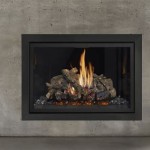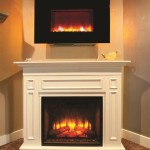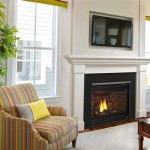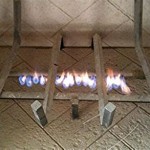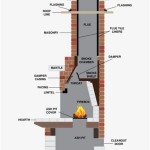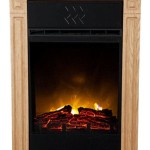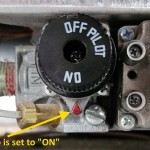Gas Fireplace Insert Replacement Cost: A Comprehensive Guide
Gas fireplace inserts offer an efficient and aesthetically pleasing way to upgrade an existing masonry or zero-clearance fireplace. Replacing an old or inefficient gas fireplace insert can significantly improve heating performance, enhance the visual appeal of a living space, and potentially increase property value. However, understanding the costs associated with gas fireplace insert replacement is crucial for effective budgeting and informed decision-making. This article provides a comprehensive overview of the factors influencing gas fireplace insert replacement costs, helping homeowners navigate the process with clarity.
The overall cost of replacing a gas fireplace insert is influenced by several key variables, including the type of insert selected, the complexity of the installation process, any necessary repairs or modifications to the existing fireplace structure, and regional labor rates. A thorough assessment of these factors is essential for obtaining an accurate estimate and avoiding unexpected expenses.
Key Factors Determining Gas Fireplace Insert Replacement Cost
Several factors contribute to the final cost of replacing a gas fireplace insert. Here are some of the most critical considerations:
1. Type and Features of the Gas Fireplace Insert
The type of gas fireplace insert chosen plays a significant role in determining the overall replacement cost. Gas fireplace inserts are generally categorized into three main types: natural gas, propane, and vent-free models. Natural gas inserts are typically connected to an existing natural gas line, while propane inserts require a propane tank. Vent-free inserts offer greater installation flexibility as they do not require a chimney or vent, but they may have restrictions based on local building codes and indoor air quality considerations.
The features and capabilities of the insert also impact the price. High-efficiency models with advanced features like programmable thermostats, variable flame height adjustments, and remote controls tend to be more expensive. Aesthetic options, such as realistic log sets, decorative fronts, and interior panels, can also add to the overall cost.
The heating capacity, measured in British Thermal Units (BTUs), is another important factor. Inserts with higher BTU ratings are capable of heating larger spaces and typically cost more than those with lower ratings. Properly sizing the insert to the room it will heat is crucial for optimal efficiency and performance. Choosing an insert that is too small may not adequately heat the space, while an insert that is too large may lead to overheating and inefficient fuel consumption.
When selecting an insert, it is important to consider the long-term operational costs as well. High-efficiency models often have higher upfront costs but can result in significant savings on energy bills over time. Additionally, some inserts qualify for energy efficiency rebates or tax credits, which can help offset the initial investment.
2. Installation Complexity and Labor Costs
The complexity of the installation process significantly impacts the labor costs associated with gas fireplace insert replacement. Several factors can influence the complexity of the installation, including the condition of the existing fireplace structure, the accessibility of the installation site, and the need for any modifications or repairs.
If the existing fireplace requires repairs, such as chimney relining, firebox repair, or damper replacement, these costs will be added to the overall project. Older fireplaces may not meet current safety standards and may require upgrades to ensure proper ventilation and prevent carbon monoxide leaks. Chimney relining, in particular, can be a significant expense, as it involves installing a new flue liner to protect the chimney structure from corrosion and ensure proper venting of combustion gases.
The accessibility of the installation site can also affect labor costs. If the fireplace is located in a difficult-to-reach area, such as an upper floor or a confined space, the installation process may take longer and require specialized equipment. This can increase labor costs significantly.
The need for any modifications to the gas line or electrical wiring can also add to the complexity and cost of the installation. If the existing gas line is not properly sized or located for the new insert, modifications may be required to ensure proper gas flow and safe operation. Similarly, if the insert requires electrical power for features like blowers or remote controls, electrical wiring may need to be installed or upgraded. These modifications should be performed by qualified professionals to ensure compliance with local codes and safety standards.
Labor costs can vary significantly depending on the region and the experience of the installer. It is advisable to obtain quotes from multiple contractors and carefully review their qualifications and references before making a decision. A reputable installer will be licensed, insured, and experienced in gas fireplace insert installation. They should also be able to provide a detailed estimate that includes all costs associated with the project, including labor, materials, and permits.
3. Additional Costs and Considerations
In addition to the cost of the insert and the installation labor, several other costs and considerations can impact the overall budget for gas fireplace insert replacement.
Permits: Most municipalities require permits for gas fireplace insert installations. The cost of these permits can vary depending on the location and the scope of the project. It is important to obtain the necessary permits before starting the installation to avoid fines and ensure compliance with local regulations. A reputable installer will typically handle the permit application process as part of their services.
Accessories: Depending on the specific insert model and the homeowner's preferences, additional accessories may be desired. These can include decorative log sets, fireplace screens, remote controls, and blower fans. These accessories can enhance the appearance and functionality of the fireplace insert, but they also add to the overall cost.
Maintenance: Gas fireplace inserts require regular maintenance to ensure optimal performance and safety. This includes cleaning the burner, inspecting the venting system, and checking for gas leaks. Some homeowners choose to perform these maintenance tasks themselves, while others prefer to hire a professional. The cost of professional maintenance can vary depending on the service provider and the complexity of the maintenance required.
Disposal of Old Insert: The cost of disposing of the old gas fireplace insert should also be considered. Some installers may include disposal as part of their services, while others may charge an additional fee. Alternatively, homeowners can choose to dispose of the old insert themselves, but they should ensure that it is disposed of properly and in accordance with local regulations.
Inspections: After the installation is complete, a gas fireplace insert typically requires an inspection by a qualified inspector to ensure that it meets all safety standards and local codes. The cost of this inspection is usually separate from the installation cost and should be factored into the overall budget.
Venting System: The existing venting system might need to be inspected or even replaced depending on the new insert chosen. This is especially true when moving from a natural vent to a direct vent system, which requires a specific type of pipe designed for gas appliance exhaust.
Homeowner's Insurance: It is prudent to notify your homeowner's insurance company about the gas fireplace insert replacement. This ensures that the updated appliance is covered under your policy and that your policy reflects any increased property value resulting from the upgrade.
These additional costs and considerations should be carefully evaluated to develop a comprehensive budget for gas fireplace insert replacement. By understanding all the potential expenses involved, homeowners can avoid surprises and ensure a smooth and successful project.
In summary, the cost of replacing a gas fireplace insert depends on a variety of factors including the type of insert, the complexity of the installation, and additional considerations such as permits and accessories. Thorough research and careful planning are essential for obtaining accurate estimates and making informed decisions.

How Much Does A Gas Fireplace Insert Cost Forbes Home

How Much Does A Gas Fireplace Cost Fireplaces Direct Learning Center

Estimated Page Fireplaces Stoves Inserts Wood Gas Pellet

Gas Fireplace Cost Guide Unit Add Ons Installation More

How Much Does It Cost To Install A Gas Fireplace Homeserve Usa

How Much Does It Cost To Remove A Fireplace Insert 2024 Data Angi

2024 Gas Fireplace Insert Costs

How Much Does A Gas Fireplace Insert Cost To Install 2024

Gas Fireplace Insert Propane Regency Vermont Castings Napoleon

How Much Does It Cost To Put In A Gas Log Fireplace Northern Va Winston S

